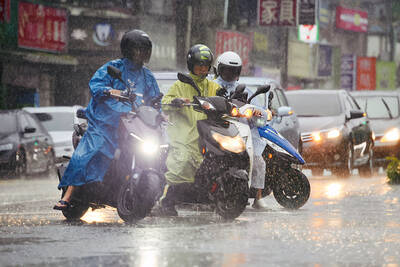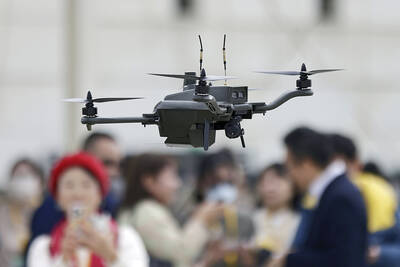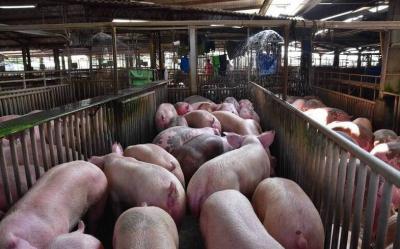Minister of Economic Affairs Chang Chia-juch (張家祝) yesterday dismissed concerns that China could block Taiwan’s entry to the US-led Trans Pacific Partnership (TPP) because China is not a member of the nascent trading bloc.
The assessment was one of reasons the government has decided to “prioritize joining the TPP” over the Regional Comprehensive Economic Partnership (RCEP), a China-led free-trade agreement for the Asia-Pacific region, he said.
Despite prioritizing the TPP, the government still hopes to participate in both pacts, Chang told a press conference at the Executive Yuan last night following the first meeting of the international economy and trade strategy task force established by President Ma Ying-jeou (馬英九).
“We do not base the prospects of our entry into the TPP on the position China holds,” Chang said.
If politics is to be a factor in Taiwan’s pursuit of regional economic integration, then it needs to be taken into consideration, he said.
“Politics play a less important role in the TPP than in the RCEP,” he said.
Furthermore, issues related to cross-strait normalization, a yet-to-be-signed agreement on goods, the service trade agreement that is awaiting legislative approval, and other important agreements laid out in the 2010 Economic Cooperation Framework Agreement could all complicate Taiwan’s prospects of joining the RCEP, he said.
Although standards and degree of liberalization required for TPP membership are much higher than those needed for the RCEP, it would be easier for Taiwan to join the TPP “as long as we can comply with the economic rules being negotiated,” Chang said.
This is the first time the government has said the TPP is a higher priority than the RCEP.
At the meeting at the Presidential Office to discuss strategies to speed up Taiwan’s inclusion in regional economic programs, Ma reaffirmed the timetable set out by Premier Jiang Yi-huah (江宜樺) that by the end of July government agencies complete an assessment of the gap between domestic laws and regulations and those agreed upon as part of the TPP, Chang said.
Diplomatic and economic officials stationed in the TPP’s 12 founding countries will soon be asked to brief the government on issues of concern arising from the ongoing negotiations, he said.
Taiwan is scheduled to present a formal plan in July to the 12 countries on how it intends to respond to the issues of concern and the requests made during TPP negotiations, Chang said.
Ma said the Presidential Office would supervise the task force, and that he will receive reports on preparatory work for TPP and RCEP entry every two to three months.
“We assure the public that the government is sparing no effort as it works toward the nation’s inclusion the regional economic integration process,” he said in the closed-door meeting.
The task force was formed after Ma promised in his New Yea’s Day address to revive the economy.
The government also invited former vice president Vincent Siew (蕭萬長) to head a committee made up of business groups, academics and economic experts to push economic liberalization.
Ma defended Siew’s reputation for financial and economic expertise and dismissed reports that there was concern about a lack of talent in his administration.
The non-government committee will serve as a communication channel between the government and the private sector, he said.
“When he stepped down in 2012, vice president Siew said he was willing to work for Taiwan’s economy, and he has worked tirelessly to solicit foreign investment and marketing Taiwan’s economic strength,” Ma said.
This story has been amended since it was first published.

The combined effect of the monsoon, the outer rim of Typhoon Fengshen and a low-pressure system is expected to bring significant rainfall this week to various parts of the nation, the Central Weather Administration (CWA) said. The heaviest rain is expected to occur today and tomorrow, with torrential rain expected in Keelung’s north coast, Yilan and the mountainous regions of Taipei and New Taipei City, the CWA said. Rivers could rise rapidly, and residents should stay away from riverbanks and avoid going to the mountains or engaging in water activities, it said. Scattered showers are expected today in central and

COOPERATION: Taiwan is aligning closely with US strategic objectives on various matters, including China’s rare earths restrictions, the Ministry of Foreign Affairs said Taiwan could deal with China’s tightened export controls on rare earth metals by turning to “urban mining,” a researcher said yesterday. Rare earth metals, which are used in semiconductors and other electronic components, could be recovered from industrial or electronic waste to reduce reliance on imports, National Cheng Kung University Department of Resources Engineering professor Lee Cheng-han (李政翰) said. Despite their name, rare earth elements are not actually rare — their abundance in the Earth’s crust is relatively high, but they are dispersed, making extraction and refining energy-intensive and environmentally damaging, he said, adding that many countries have opted to

SUPPLY CHAIN: Taiwan’s advantages in the drone industry include rapid production capacity that is independent of Chinese-made parts, the economic ministry said The Executive Yuan yesterday approved plans to invest NT$44.2 billion (US$1.44 billion) into domestic production of uncrewed aerial vehicles over the next six years, bringing Taiwan’s output value to more than NT$40 billion by 2030 and making the nation Asia’s democratic hub for the drone supply chain. The proposed budget has NT$33.8 billion in new allocations and NT$10.43 billion in existing funds, the Ministry of Economic Affairs said. Under the new development program, the public sector would purchase nearly 100,000 drones, of which 50,898 would be for civil and government use, while 48,750 would be for national defense, it said. The Ministry of

African swine fever was confirmed at a pig farm in Taichung, the Ministry of Agriculture said today, prompting a five-day nationwide ban on transporting and slaughtering pigs, and marking the loss of Taiwan’s status as the only Asian nation free of all three major swine diseases. The ministry held a news conference today confirming that the virus was detected at a farm in Wuci District (梧棲) yesterday evening. Authorities preemptively culled 195 pigs at the farm at about 3am and disinfected the entire site to prevent the disease from spreading, the ministry said. Authorities also set up a 3km-radius control zone